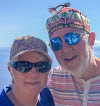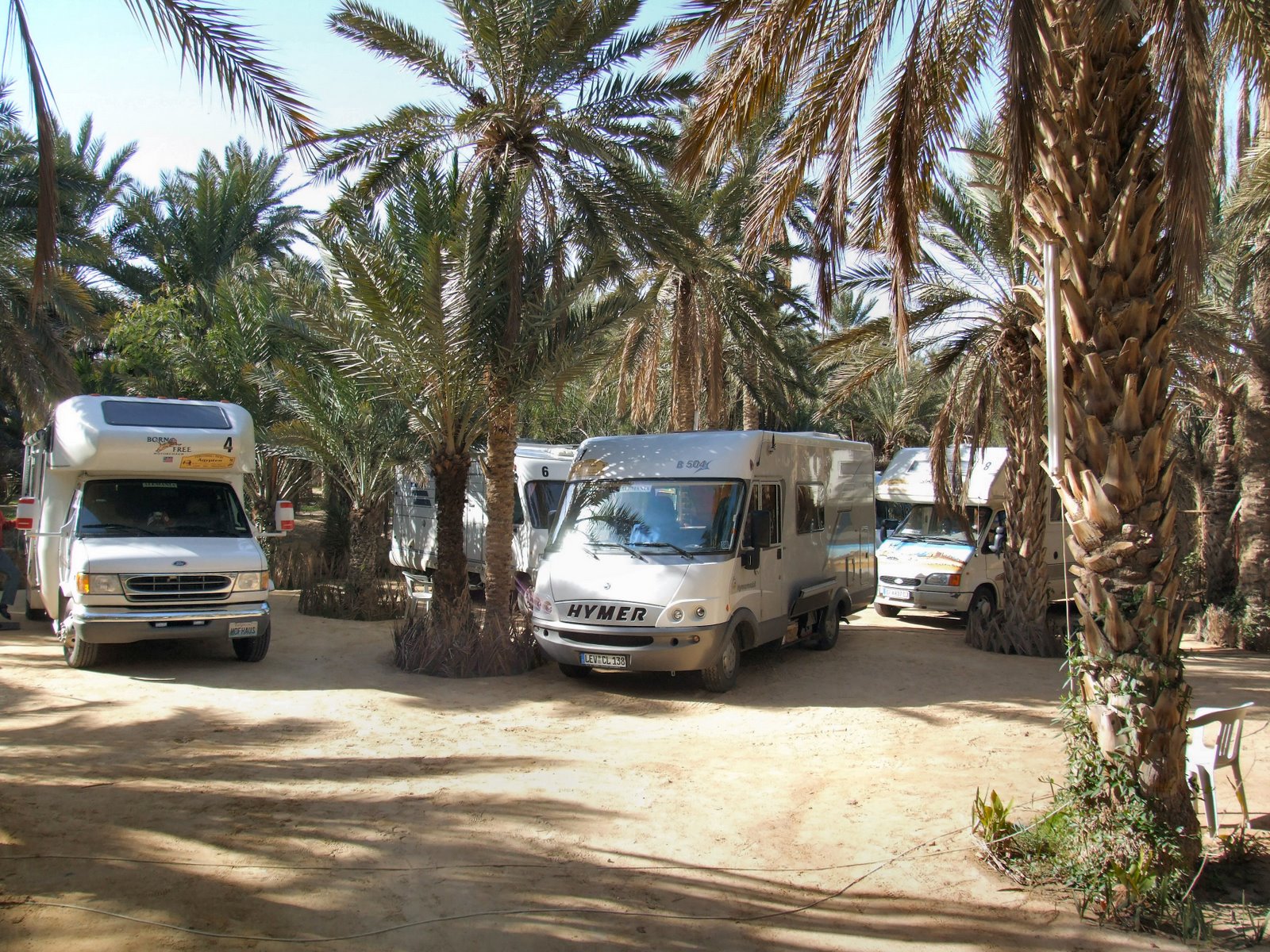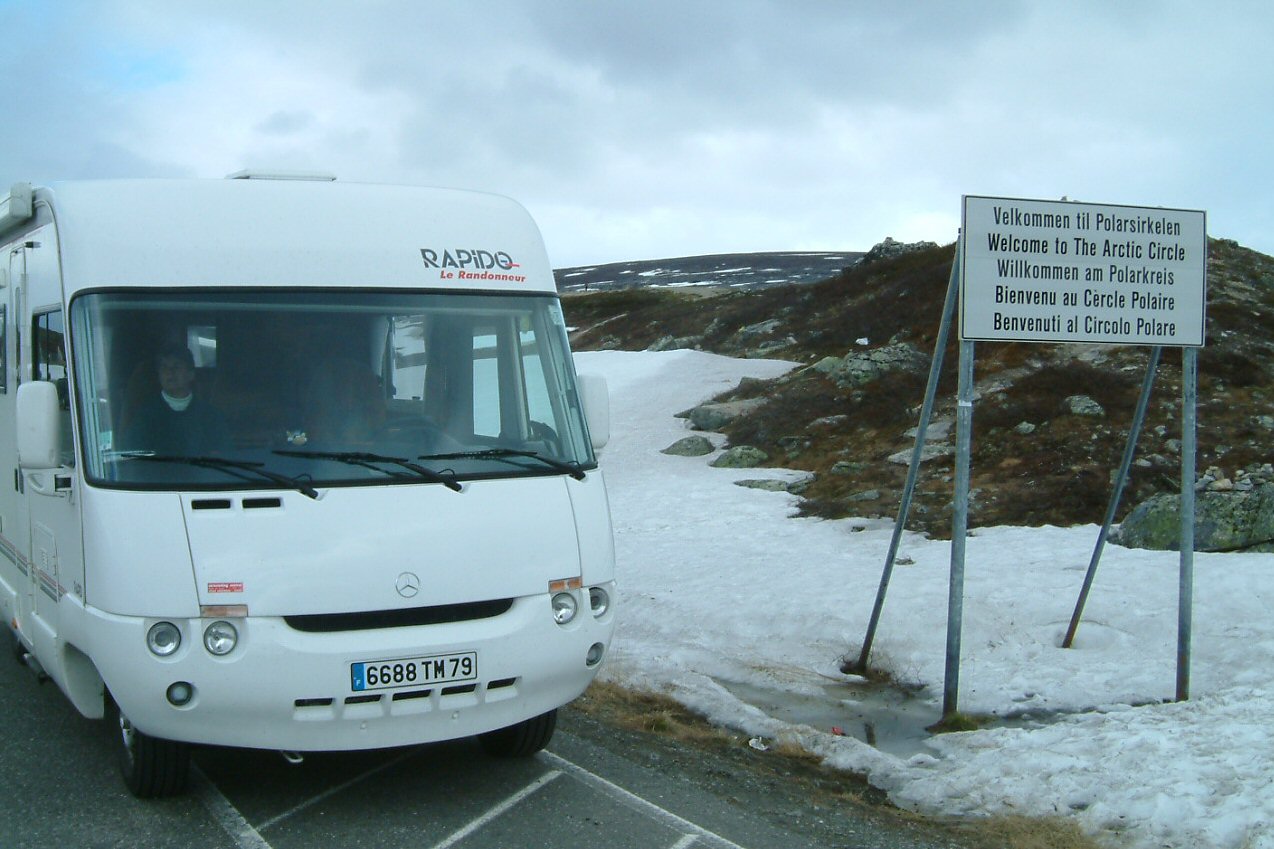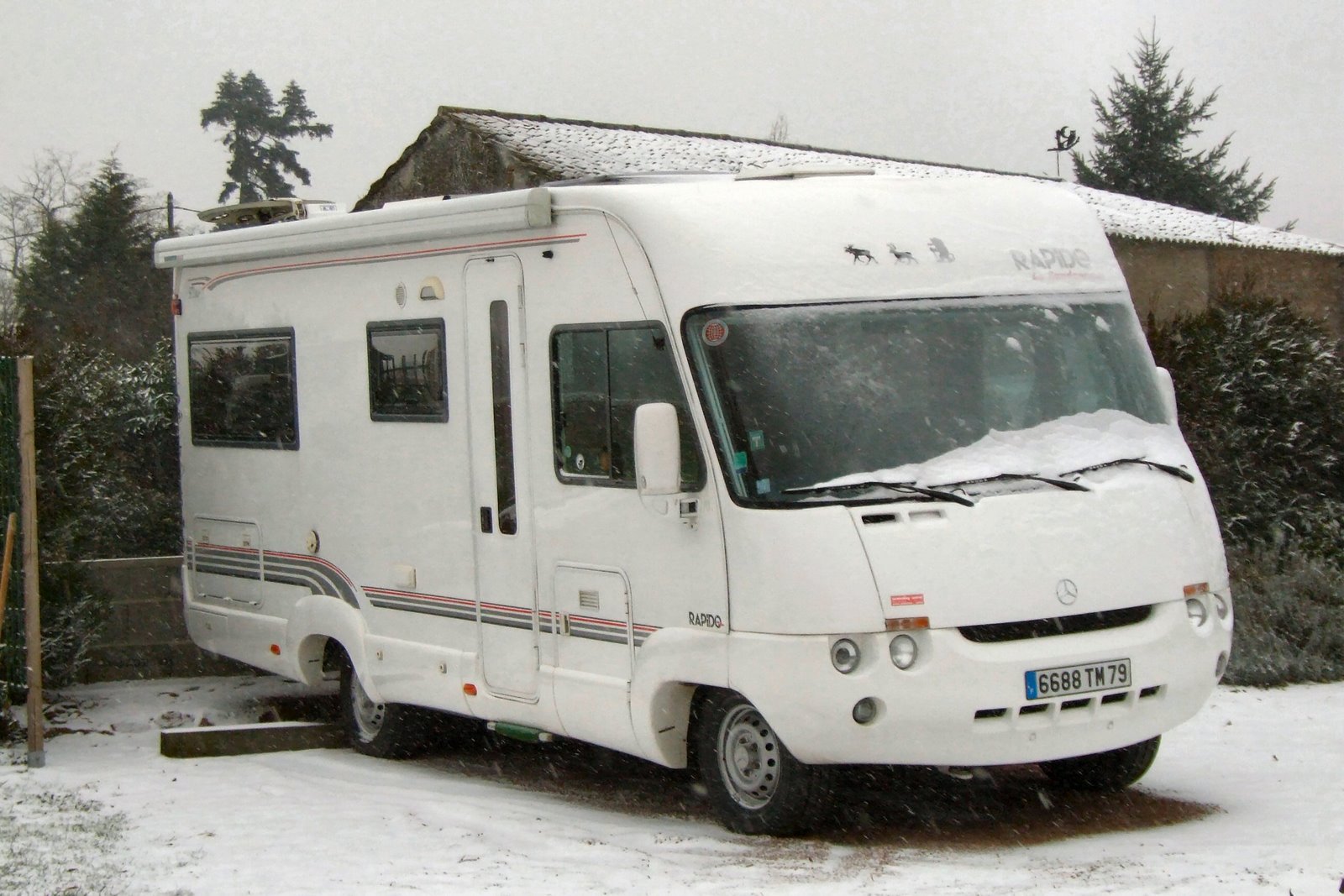Part One – Tunisia and Libya
A 12 week adventure, with a motorhome, through Italy, Tunisia, Libya, Egypt, Jordan, Syria and Turkey ending in Greece needs tremendous planning and preparation. Not only do you need to ensure that your vehicle is fit for the voyage but you need to obtain documents not normally needed for most motorhome journeys. An International Driving Licence and International Vehicle Registration Document are perhaps the easiest as both are available from the RAC and AA.
For us the most problematic document was the Carnet de Passage that is needed for most of the countries that we would be travelling through. This simple document avoids the necessity to pay import duty for the temporary importation of a vehicle. This too is available from the RAC but it is costly; our 4 year old Rapido is worth at least £25,000 so the RAC asked for a bank guarantee or insurance cover of £125,000 since we were going through Egypt on this trip. The insurance cover costs £12,500 and only half is repaid if no claim is made against the carnet, a bank guarantee proved impossible for us. Fortunately ADAC, the German automobile club came to our rescue, they provided the carnet for a cash deposit of 15,000€ (£10,000) and the full amount was repaid at the end of the trip and they charged only 154€ (£100) for the service. They have no problem providing carnets for foreign registered vehicles.
The next hurdle is the question of visas. Libya in particular is almost impossible for most motor-homers as you need an official invite and to be accompanied during your entire stay. Here our old friends at Perestroika Tours in Germany had the solution and we joined their international tour for this journey.
The final problem and almost insoluble for most UK motorhome owners is insurance for the whole journey. Our camper is registered in France and naturally has French insurance which covers fully comprehensively many of the countries automatically and any other country for up to 90 days so for us it was not a problem. You need to check with your insurers early in the planning process. It is possible to buy third party cover at the borders, where cover is not provided by your insurers, and sometimes this is compulsory even when you are covered.
From the vehicle viewpoint, and having experienced this journey ourselves in the spring of 2006, I would ensure your tyres are good and the valves have been renewed. Also despite what your service schedule might say have the oils in the engine, gearbox and rear transmission changed, also have new oil, air and fuel filters fitted and carry spares. Good brakes and suspension are also essential as they will be tested to the limit. Over this 5 month trip the problems encountered by our small group, fuel pump/filter problems, punctures and tyre valve problems, could in the main have been avoided if prior servicing had been completed including the points made above. The other problems we had perhaps could not have been foreseen nor avoided and were electronic in nature not helped I am sure by the holes, bumps and poor roads encountered almost everywhere.
Although our journey really started in Florence and we spent 8 days travelling to Palermo in Sicily, this first part of our story will cover Tunisia and Libya. For our 7 metre camper and two passengers the ferry from Palermo to Tunis cost 264€ (£180). The voyage takes 11 hours and you need to add at least 4 hours for the formalities at both ends. For us the crossing was very rough and many of our group suffered sea sickness, as did many other passengers, so perhaps a cabin would be a good additional investment. Having filled in 4 forms; 1 for each passenger, another for the driver and 1 for the camper we braced ourselves for arrival in Tunis. Fortunately the formalities were speedy and efficient and the staff polite and helpful. Just avoid the many touts who want to help you for a fee. Once out of the port Tunis is just 15kms away and a large car park provided a safe and comfortable overnight venue. We stayed in this car park for 2 nights so had plenty of time to visit the Medina in Tunis and catch the train to Sidi Bou Said, about 20kms to the northeast of the capital. The tourist police came 2 or 3 times to the car park to check we were alright and had no problems.
The next day we started our journey south, initially heading for Kairouan. A perfectly timed coffee break saw us along side the remains of a 90km Roman aqueduct that originally served Carthage with fresh spring water. Substantial parts of the aqueduct remain and it is well worth the stop. By now we had begun to wonder why most vehicles toot twice when they were near us; but it was just the Tunisians saying hello, nice to see you, so we relaxed and waved back. A perfect lunch break found us at Thuburbo Majus and the remains of a spectacular Roman city and after a pleasant afternoon drive we camped that night in the car park of the Hotel Continental in Kairouan. Fortunately Tunisian roads are generally good and fairly quiet particularly the further south you go and diesel is cheap at 0.64 Dinah per litre (0.40€ or 28p). However further south petrol stations are few and far between and even those shown on maps may not be open so we kept topped up to avoid problems.
The next few days saw us at Tozeur, Douz, Matmata and many other places on route. Everywhere we were well received by the Tunisians and although the campsites are not of western European standards they are adequate and generally clean. In Tozeur we camped for 2 nights at the campsite Beaux Reves (beautiful dreams) so had time to take a 4 x 4 trip out into the desert and the mountains close to the Algerian border. The following day’s drive across the causeway that dissects the Chott El Jerid, Africa’s largest salt lake, was stunning with mirages in every direction. Even in late February temperatures were above 20 degrees and the days mainly sunny with clear blue skies.
We were able to visit on our way the location used in the original Star Wars film and fans will recognise the name Tataouine from the film, which is a village in southern Tunisia but a planet in Star Wars.
On our last day in Tunisia we made an early start for the Libyan border as we knew the formalities would take some hours to complete. Departure from Tunisia was comparatively quick taking not much more than an hour then the fun began. Whilst still technically in Tunisia every camper in our small convoy was subjected to a search by a Libyan Customs Officer and a non-uniformed official who literally emptied every cupboard and storage space in every vehicle looking for alcohol. Of course we all had some and this was placed in a visible position when they moved to the next vehicle. The alcohol police, as they became dubbed, were extremely thorough and missed nothing, we had heard that in earlier years the “pork police” had been similarly effective. The uniformed official told us we were in serious trouble and the matter would be reported. This process took almost 4 hours to complete and in the end they confiscated half of our drink, generally the really good stuff, and left us the rest.
We then proceeded, duly chastened, to another area where our passports were processed, our carnets stamped and checked, and our Libyan number plates issued. Various fees were payable even though we had our visas in place. We also obtained our compulsory third party insurance. Total costs were not far short of 200€ (£138). We were comforted by the fact that this was just a practice run for the far more lengthy process that we would endure at the Egyptian border later in our journey. In the end we entered Libya just as dusk arrived and were faced with an 80 kilometre drive, led by our Libyan minders, who would be with us for the next 11 days. Just before Sabratta, where we were due to camp, we entered a small town. It was like going back forty years, shops were open and the traffic chaotic, it was like we had joined a stock-car race with numerous semi derelict cars chasing each other around the cramped narrow roads. Fortunately our first night’s parking place, alongside the youth hostel, was not far away.
During our 11 days in Libya we would travel along the Mediterranean coast, because driving through the interior of this magnificent country is mostly only possible with 4x4 vehicles. This gave us plenty of time to visit the former Roman “league of the three cities” or tri-polis: Sabratta, Leptis Magna and Tripoli. Leptis Magna, a UNESCO listed site was particularly spectacular and camping in car-park No 1 gave us ample time to explore and the chance to take a bus trip to Tripoli, which is rather calm and quiet compared to other capitals.
It is quite apparent that most Libyans enjoy a good lifestyle and we were welcomed where ever we went. Indeed the people we met were kind, helpful and generous and it took us a couple of days to realise that when we bought bread and payment was refused just what was happening. Bread in Libya is subsidised and we were buying such small quantities that payment was declined. However we experienced the same phenomena when we tried to buy some flowers, the shopkeeper asked where we were from and then said “welcome, please the flowers are a gift” Now I could just see that happening in the UK to a foreign visitor!
The second half of our trip across Libya saw us visiting Sirte, Ajdabiya, Tolmetha and Cyrene before heading to Tobruk. We stopped at the Commonwealth War Cemetery just before Acroma, 20 kms east of Tobruk, and were shown the graves of 2 holders of the VC and that of the only women, an army nurse, to be buried there. We spent our last night in Libya camped alongside the German War Memorial high above Tobruk, having driven through this bustling town. With all the road signs in Arabic we quickly devised a way of finding the route we needed, Benghazi became “snake and W” because that is just what the end of the word looked like, but with our eyes trained to read left to right we were of course reading the end of the word first; still the system seemed to work. Generally the roads were good although large potholes, speed bumps and wayward manhole covers caused a real and ever present problem.
We took a diversion one day to visit the magnificent engineering project called the Great Manmade River which is pumping millions of gallons of water each day from deep in the Sahara to the many populated towns on the Mediterranean coast. Permission was easily obtained from the local officials for this extra trip and we could see for ourselves this outstanding achievement. On the same day we met another sandstorm but this time with an extra twist, a simultaneous heavy shower, which left thick mud clinging to almost every exposed and unexposed part of the vehicle; so don’t try this trip if you like to have a clean motorhome.
Campsites in Libya are non-existent but museum car parks, youth hostels and Scout HQs were very welcoming resting places and sometimes were even able to provide electricity and a very welcome shower. Diesel is readily available and is less than in Tunisia, 0.08€ or 6 pence a litre, but unless you are happy to wade in deep stagnant diesel a supply of disposal overshoes is essential when filling up.
An early start to the Egyptian border is essential since the formalities on both sides can easily take 8 to 10 hours and requires patience and tolerance. The last 140 kms in Tunisia were through barren, flat and uninteresting desert and we were at the border shortly after 8am where we joined the first of many queues. Entry into Egypt will be covered in the next part of our story.









